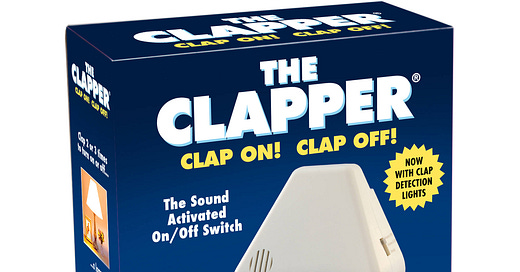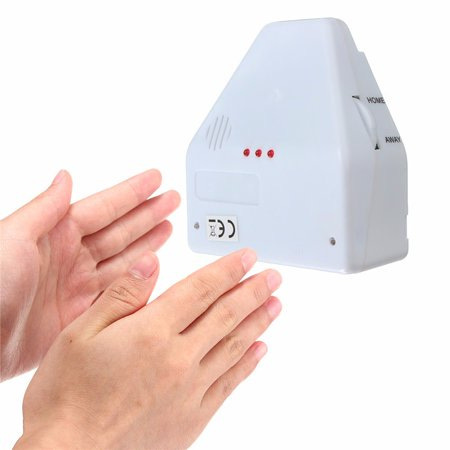“Alexa, set an alarm.”
“Alexa, play cocktail party music.”
“Alexa, turn on my bedroom lights.”
The smart speaker – perhaps the modern epitome of household automation – is all around us, but efforts to control our appliances trace back much further than Amazon’s Alexa.
In the mid-1980s, American businessman Joe Pedott started selling The Clapper, a sound-activated switch that turned appliances on and off with a clap of the hands. It was marketed, just like today’s smart speakers, as a convenience tool. Without leaving your chair or bed, you could turn off the lights or turn on the television. Dark when you come home from a late dinner? Just clap, and all your lights will turn on.
Sure, looking back, The Clapper seems like an outdated novelty. (And, in some ways, it always was a novelty: The marketing slogan was the cheeky “Clap on, clap off, it’s The Clapper!”) But The Clapper served as an important innovation in smart home history.
The first patent for The Clapper was filed in 1985 under ‘Sound activated light switch.’ However, this original iteration didn’t work too well (it often short-circuited whatever was plugged into it), so the device was redesigned. A second patent was filed in 1993 for a ‘Method and apparatus for activating switches in response to different acoustic signals.’ It’s this second patent – the one that led to an actually successful Clapper – that’s noteworthy. The patent is cited in 89 subsequent patents, including one from Apple for ‘Forming computer system networks based on acoustic signals’ (2014).
In other words, Apple’s development of the Internet of Things is indebted, at least in part, to a clapping novelty from the 1980s. One technology inspired another. The Clapper led to our modern world of interconnected audio-controlled objects. However primitive and kitschy, The Clapper allowed people to feel as though they were in communication with inanimate objects. The Clapper was an early way to “talk” to your house.
Today, though, this communication is bidirectional: Siri and Alexa can talk back to you, asking clarifying questions or providing additional suggestions. The Clapper could only listen. Today, the objects can clap back.
Notes.
Adapted from Charles Rice’s entry on The Clapper in Extinct: A Compendium of Obsolete Objects.





